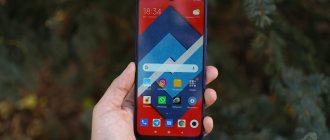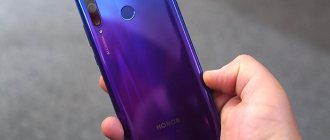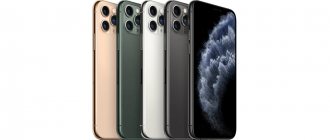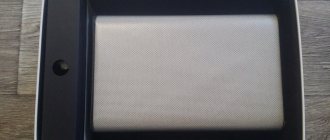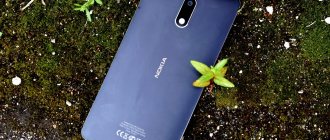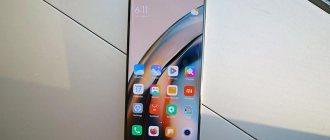The idea of demonstrating the capabilities of its operating system on the most powerful hardware (and at the same time trying to earn more in a segment with higher margins) did not come to Google right away - and caused a whole storm of controversy. Releasing an expensive Pixel in a crowded market, especially so soon after the super-successful Nexus 5, was a risk. Yes, Google can well afford to take risks; after all, the company does not depend on the sale of hardware at all, but spoiling its reputation and completely ignoring this market precisely in financial terms, and not as a testing ground for the company’s ideas, is not an option.
This became well clear after the release of Pixel 2/Pixel 2 XL - the company took the criticism very carefully and made several powerful moves in technical terms: from an AMOLED display to a proprietary HDR+ image processing system using a specially designed coprocessor. Combined with the fact that the passions around the more than doubling price have subsided, the Pixel 2 received both very decent press and normal sales.
But what is Pixel 3? A boring evolution combined with a hateful “bang” - or a continuation of a proven line, this time supported by a breakthrough in terms of the front camera? In the flagship smartphone market, where competition is only increasing (primarily due to the powerful rise of Huawei), does the Google smartphone have any clear advantages over its competitors, or is it again, as in the case of the first “pixel”, purely about the mythical “name magic” that the Pixel 3/Pixel 3 XL is trying to ride on?
Pixel 3: the next generation of mobile phones from Google
Like the old one, the new Pixel smartphone family consists of two models: Pixel 3 with a 5.5-inch display with an 18:9 aspect ratio and Pixel 3 XL with a 6.3-inch display with an 18.5:9 aspect ratio.
Both smartphones are protected by Gorilla Glas 5 and have an aluminum frame. At the same time, the reverse side is less slippery than the usual glass surfaces. These models from Google use "molecular etching" on the back cover, making it more grippy and less susceptible to untidy fingerprints. Both Pixel models are IP-68 certified, meaning they are protected from water and dust.
New Pixel family from Google: Pixel 3 and Pixel 3 XL
Hardware components
For the first time, Pixel smartphones feel like $1000 devices, while they already have competitors at that price. Last year's Pixel 2 was somewhat average in terms of appearance, with a plastic-like shell. This year the back panel is glass, and the finish overall seems to be of higher quality.
The feeling of premium is given by a combination of various little things. The gap between the glass and the aluminum frame is as tight as possible, the corners of the screen are curved, the glass smoothly merges into the frame in the middle.
The class is especially noticeable on the smaller Pixel 3. It looks and feels like the premium device it should be. At $799, it's a natural fit, although Google hasn't reached the level of Samsung or Apple.
Available in three color options: black, white and pink. The last one is the most interesting. It has a sleek shade and an orange power button. However, all versions look great. The only logo on the case is the letter G on the back.
The rear is offered with a matte finish, while the top is glossy. This gives the classic look of Pixel smartphones. The device in the hand seems more reliable than a completely glossy one.
Gorilla Glass 5 is used on the front and back. Scratch protection is on par with other modern smartphones. However, the matte back is not as protective as we would like. If you carry the device in your pocket with keys, scratches will remain.
Naturally, Google responds to this by saying that they developed the device taking into account protection and durability, that lengthy testing processes were carried out, etc. They claim that the glass is comparable to that of other premium smartphones. However, looking at the scratches on the body, it doesn't seem like the glass is up to industry standards. Let us repeat once again that scratches are visible only on the matte side, there is nothing on the glossy side.
Pixel 3 XL with OLED display
The Pixel 3 XL, unlike the Pixel 3, has a distinctive feature at the top of the screen that we've been seeing a lot lately: a notch called the Notch. It takes up a relatively large space on the display. The screen itself is almost frameless, although the lower part of the smartphone is relatively wide.
Google uses an OLED panel here, which has 144 percent coverage of the sRGB color space. Colors look rich, and what's especially striking is the fact that black is truly black. In addition, the display supports HDR technology, which means it can display photos and videos with higher contrast and vibrant colors.
We liked the image quality. Despite the fact that when viewed from the side, a slight blue tint catches the eye, compared to the display of the Pixel 2 XL, everything has become significantly better here.
The resolution of the 3 XL with its 2960x1440 pixels (QHD+) is higher than that of the model 3 (2160x1080 pixels) and the image density of 523 ppi exceeds its clarity (443 ppi). The Pixel 3 XL's screen shines quite brightly, but not nearly as much as, for example, the iPhone XS. For the Pixel 3 XL, we measured a maximum value of 407 cd/m2. The iPhone XS produces almost 300 cd/m2 more. This difference becomes especially noticeable when working in direct sunlight - the iPhone remains much better readable.
Hard to miss: the notch on the top of the Google Pixel 3 XL screen
Appearance
The first thing that immediately catches your eye on the front panel is the large unibrow and rather large chin. Reviews about bangs and chin on the Internet are already numerous and extremely unflattering. In the end, design is a matter of taste; some will like it, while others will not pay any attention to it. You can probably somehow explain the large non-monitor areas at the top and bottom by the fact that the phone has a dual front camera and stereo speakers. But other manufacturers managed to solve the issue with speakers more elegantly, and modern cameras do not take up too much space. The frames around the edges of the screen are very narrow.
Case materials – glass and plastic. The rear glass panel has a glossy stripe on top and frosted glass below. The device feels pleasant to the touch and is comfortable in the hand. The back panel, unlike the front, looks good, but the matte surface is very susceptible to scratches. At the top left is a single video camera and flash. In the middle there is a fingerprint scanner. The sensor is easy to feel because its texture is different from the rest of the glass surface of the panel. It works clearly and quickly.
On the left is the SIM card slot. On the right is the volume rocker and the power button, which stands out in all color options except black.
The phone is dust and waterproof. Dimensions of the device: 158 x 76.7 x 7.9 mm.
There are three color options:
- black;
- white;
- light pink.
Typical Pixel: main camera with only one lens
No matter how many phone makers are currently packing dual or even triple cameras into their phones, Google is stuck with a single lens on the back of its new Pixel phones. Below it is a 12.2-megapixel sensor, the camera has f/1.8 and optical image stabilization.
The quality of the photos is impressive, the pictures can be considered detailed and clear. The colors and contrasts look convincing. But in direct comparison with its predecessor, Pixel 2 (XL), we could not determine any differences in quality either in daylight or in twilight lighting.
What about comparison with iPhone XS? We wanted to know the results as accurately as possible, so we compared photos taken in twilight lighting on the iPhone XS with those taken in similar conditions on the Pixel 2 XL, Pixel 3 and Pixel 3 XL. All the photos turned out to be about the same level and, given the poor lighting conditions, we find them to be very good and detailed. While the iPhone XS retains details slightly better, we note lower noise levels and more natural color reproduction in photos from the Pixel models. Another plus in favor of the Pixel: the optical image stabilizer makes the image less likely to blur, and in the case of video recordings it can also provide good support.
In the Notch area above the screen, the Pixel 3 XL, in addition to stereo speakers, also houses an 8-megapixel front camera. But that is not all. For the first time, Google is integrating a second lens up front that allows you to take wide-angle (97-degree) selfies. Portraits with the Pixel 3 XL look - as they did with the Pixel 2 - very sharp. You can also apply depth-of-field effects here and they work at least as well as with other dual cameras. In addition, you can regulate this effect at your discretion “retroactively”, i.e. after shooting.
Pixel 3 XL's 12.2-megapixel main camera takes photos on par with the iPhone XS
Artificial intelligence powers the Pixel 3's camera
Using artificial intelligence in the camera, Google has a couple of tricks up its sleeve: for example, the so-called “super res-zoom” function (here “res” means “resolution”) “recalculates” several images into one, thereby simulating the zoom function and Even without using the optical zoom, it provides clear, fully detailed images.
With Photobooth, the AI camera automatically takes a photo when it thinks it's the perfect moment—for example, if the model smiles or makes a cute face. In addition, she can choose from several pictures the one in which, for example, no one closed their eyes. It can also independently focus on objects in motion, while the user simply touches them on the screen. Even if you move the smartphone after this, the camera will not lose the set focus.
The new “Night Sight” feature should help you achieve acceptable results even in complete darkness, in which you would not even try to take pictures before. However, we were not able to try this feature in action - “Night Sight” will be unlocked during a software update, which is expected in the next six months.
The AI camera will automatically take a photo when it decides that the face is in the optimal angle
Pure Android 9 Pie
The Google Pixel 3 XL is powered by a Snapdragon 845 processor clocked at 2.5 and 1.6 GHz, which is supported by 4 GB of RAM. Our Pixel PDF test loads almost as quickly as the iPhone XS, at 4 seconds. That's faster than the Samsung Galaxy S9, which takes 13 seconds. When launching applications and opening websites, we did not notice any slowdowns, the system responded quickly and smoothly. The fingerprint scanner, located in a classic Pixel location - under the main camera on the back of the case - works just as quickly. By the way: all Pixel 3 models use a security chip called “Titan M” that promises strong data encryption and improved access protection.
Pixel 3 XL runs on the latest and native Android 9 Pie operating system. The gesture control system, similar to that used in iOS, is now an integral part of the system and, unlike the Pixel 2 (XL), can no longer be deactivated. The Digitial Wellbeing-Dashboard smartphone usage review app is also now available for use.
A big benefit, and perhaps one of the biggest selling points for buying a Pixel: the three-year software update guarantee. New Pixels receive monthly security patches and are guaranteed to receive the next two successors to Android 9 Pie. And this is precisely for the release date, and not a month later. Whether this gives an overwhelming advantage over competitors is an open question.
While most users complain about cluttered Android interfaces from manufacturers like Samsung, some others complain that Google's stock Android lacks many practical features. In addition, manufacturers such as Nokia (for example, in the Nokia 8 Sirocco model), in the form of Android One, offer a minimally adapted operating system without applications from third-party developers. At the same time, such smartphones are also provided with up-to-date software - although, of course, not as fast as the Pixel family.
By the way: along with the new models, Google also presented a new “Pssst function”. The Pixel automatically turns on do not disturb mode when placed face down.
Google Pixel 3 XL is powered by a Snapdragon 845 processor, which is supported by 4 GB of RAM
"Chips" of the device
Let's go through the numbers here:
- Active Edge
In my opinion, squeezable edges are a very useful thing. It's incredibly convenient to call Assistant by simply squeezing your phone. Also, using a third-party program, you can reconfigure it to launch any application or script.
2. Select text and search by photo directly from the task manager
An incredibly convenient feature, especially where copying text is impossible, for example, a post on Instagram. In the same way, you can immediately find or translate selected text. You can also search by photo shown in the application (this function works in the camera application). You just open multitasking, click on the photo and that’s it, the Great Google will find matches for you.
3. AoD (Always on Display)
A well-known and no less useful function. It seems like a small thing, but in practice it’s always useful. See what notifications have arrived or just look at the time. And of course, minimal battery consumption
Well, about the little things:
4. IP68 waterproof
5. Unlimited in Google Photos
6. Wireless Charging
The weak point is the battery
Battery life was not good enough. In our online testing with the display activated, the Pixel 3 XL with its 3,430mAh battery lasted approximately 8.5 hours. This is below average. iPhone XS Max lasts about 1 hour longer.
To charge your smartphone, Google includes an 18W power supply in the package. With its help, Pixel 3 XL replenishes its energy reserves in about 2 hours. The same can be done through wireless charging with a power of up to 10 W. However, Google uses the Qi standard, so users do not necessarily have to buy the new Pixel Stand wireless charger. By the way, Google is launching it on the market simultaneously with Pixel 3 models with a price tag of 6,000 rubles.
The Pixel 3 XL will be fully charged again in approximately 2 hours
High price for “just” good equipment
The Pixel 3 XL doesn't have a classic headphone jack, but an adapter is still included in the package. On the front side of both models there is a stereo speaker that produces good sound and does not distort even at high volume levels. As with its predecessor, however, we hear a slight channel separation.
In its reference smartphones for Android 9, Google refuses to integrate a micro-SD slot to expand the internal memory. So, if you're thinking about purchasing one of the Pixel models, it's worth first thinking about the size of storage you need - 64GB or 128GB. Consider that Google offers unlimited storage space for photos and videos in original resolution in Google Fotos cloud storage, even if this offer is limited to three years. There is no Dual-SIM function here either. But Bluetooth 5.0 and NFC are on board.
Google charges a high price for the proposed equipment. With 64 GB of internal memory, the Pixel 3 XL costs about 75,000 rubles, and the 128 GB version will cost the buyer 80,000 rubles. Thus, the price tags are at the level of the iPhone XS. The devices became available for purchase on November 2.
No audio jack, no Dual-SIM, no memory expansion. Google charges high prices for the proposed equipment
Characteristics and test results of Google Pixel 3 XL 64GB
| Price-quality ratio | 48 |
| OS during testing | Android 9.0 |
| Weight | 184 |
| Height x width | 158 x 77 mm; |
| Thickness | 8.7 mm; |
| Screen: diagonal | 6.3 inches |
| Screen: size in mm | 70 x 144 mm; |
| Screen: type | OLED |
| Screen: resolution | 1.440 x 2.960 pixels |
| Screen: Dot Density | 522 ppi |
| Screen: max. brightness | 406.9 cd/m² |
| Screen: staggered contrast in a dark room | 163 :1 |
| Download speed: PDF 5 MB via WLAN | 4.4 s |
| Download speed: chip.de test chart via WLAN | 6.2 s |
| CPU | Qualcomm Snapdragon 845 |
| CPU frequency | 2.800 MHz |
| Number of CPU cores | 4+4 |
| RAM capacity | 4 GB |
| Battery: capacity | 3.430 mAh |
| Battery: surfing time | 8:33 h:min |
| Battery: charging time | 1:57 h:min |
| Fast charging function | Yes |
| Battery: discharging time/charging time | 4,4 |
| Wireless charging function | Yes |
| WLAN | 802.11n, ac |
| VoLTE | Yes |
| LTE: frequencies | 800, 1.800, 2.600 MHz |
| LTE: speed | up to 1,000 Mbit/s |
| Camera: resolution | 12.2 megapixels |
| Camera: measured resolution | 1,600 pairs of lines |
| Camera: expert assessment of image quality | Very good |
| Camera: VN1 noise | 2.1 VN1 |
| Camera: Optical Image Stabilizer | Yes |
| Camera: autofocus | Yes |
| Video resolution | 3.840 x 2.160 pixels |
| Front camera: resolution | 8.0 megapixels |
| LED indicator | multicolor |
| SIM card type | Nano-SIM |
| Dual SIM | — |
| Protection against dust and moisture (IP certificate) | IP68 |
| Biometric unlocking | fingerprint sensor, face recognition |
| User accessible memory | 64 GB |
| Free memory | 53.2 GB |
| Memory card slot | — |
| USB connector | Type-C-USB 3.1 |
| Bluetooth | 5 |
| NFC | Yes |
| Headphone output | Type-C |
| SAR | — |
| Firmware version during testing | PD1A.180720.030 |
| Test date | 2018-10-11 |
Equipment
The smartphone comes with quite a few adapters and a good branded headset. In the box, in addition to the smartphone itself, you can find the following:
- charging that supports fast mode;
- wired headphones;
- USB Type-C cable;
- adapter for 3.5 mm jack;
- adapter for USB Type-A interface;
- a paperclip for removing the SIM card;
- instructions.

